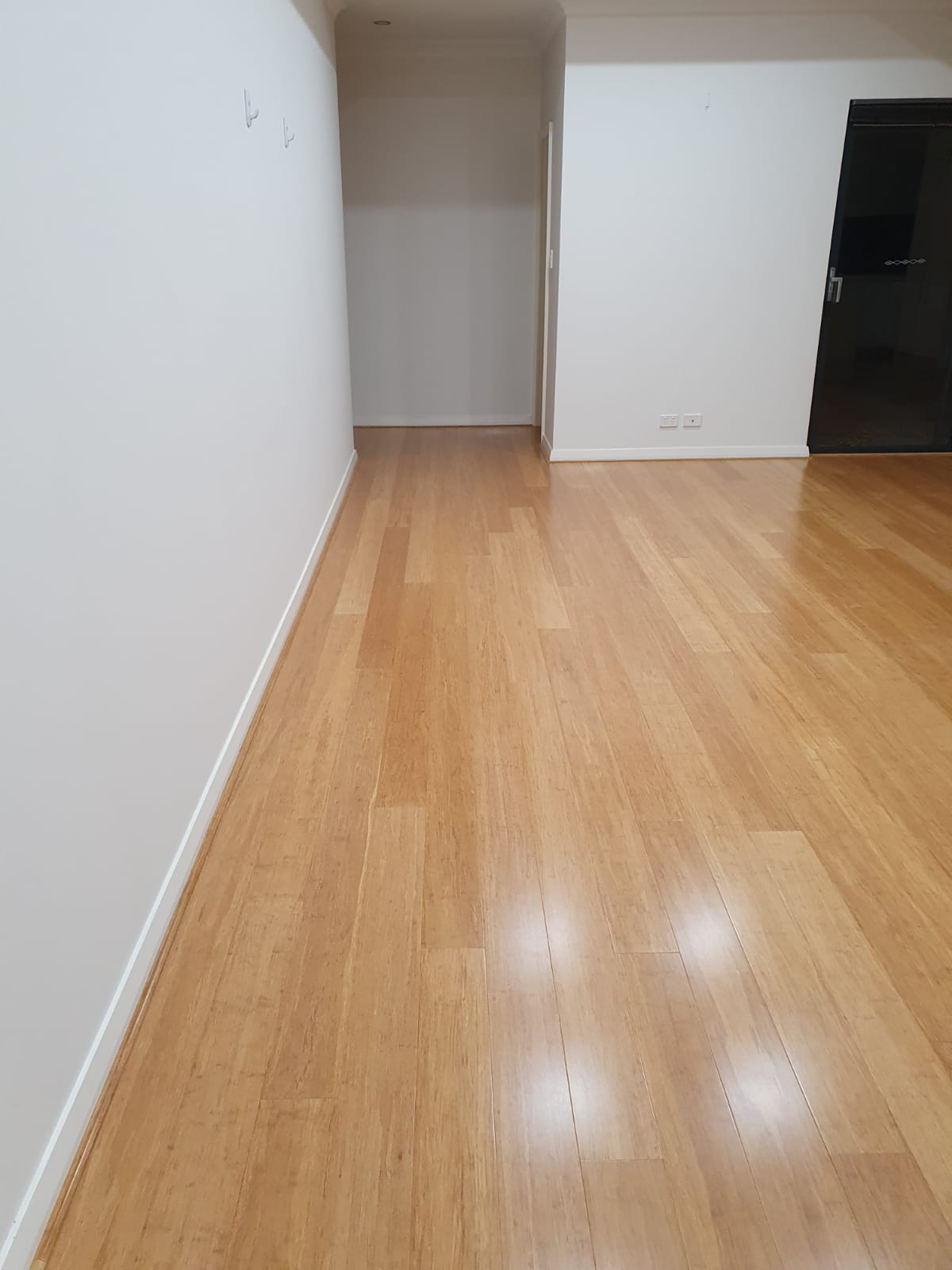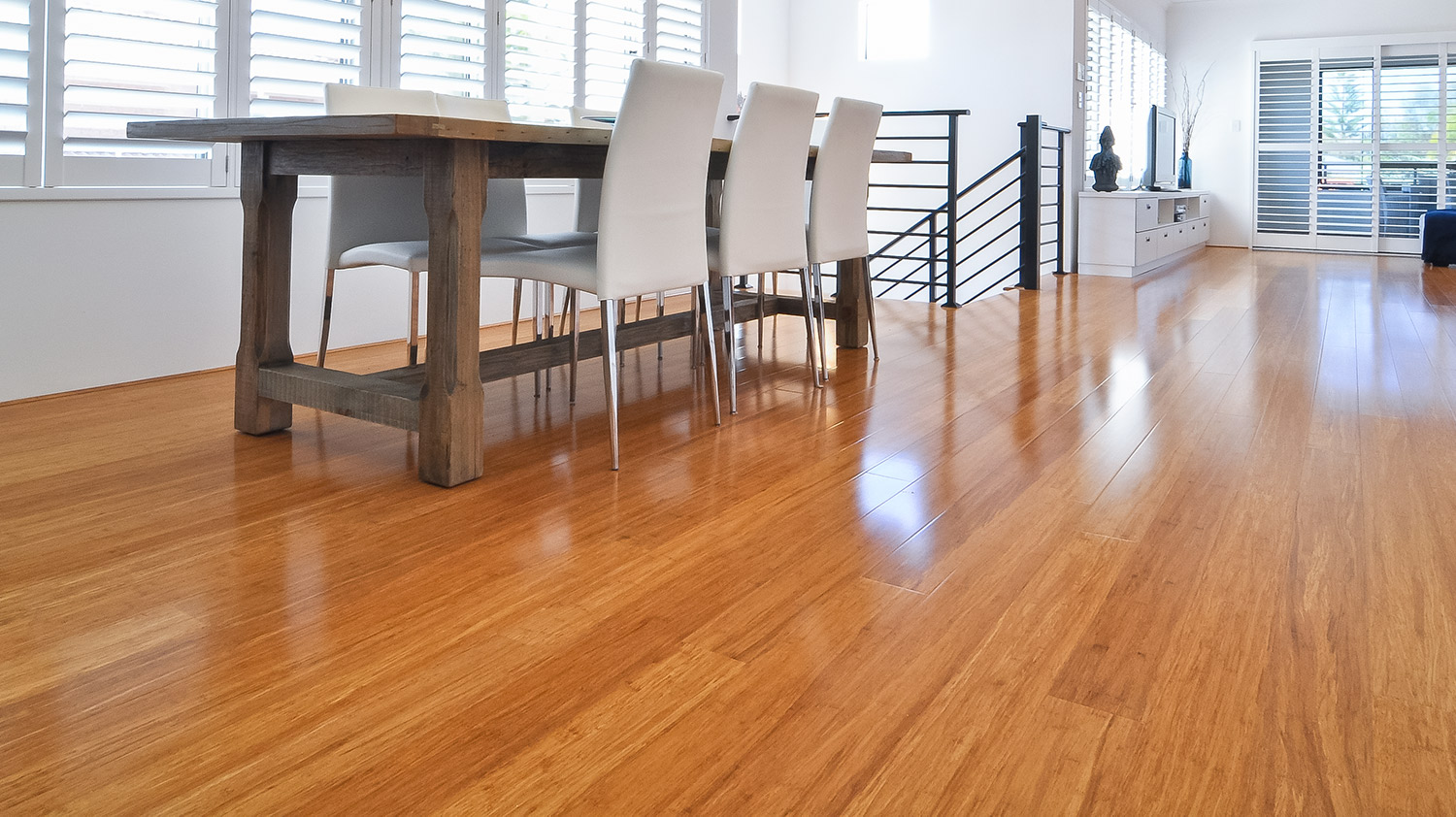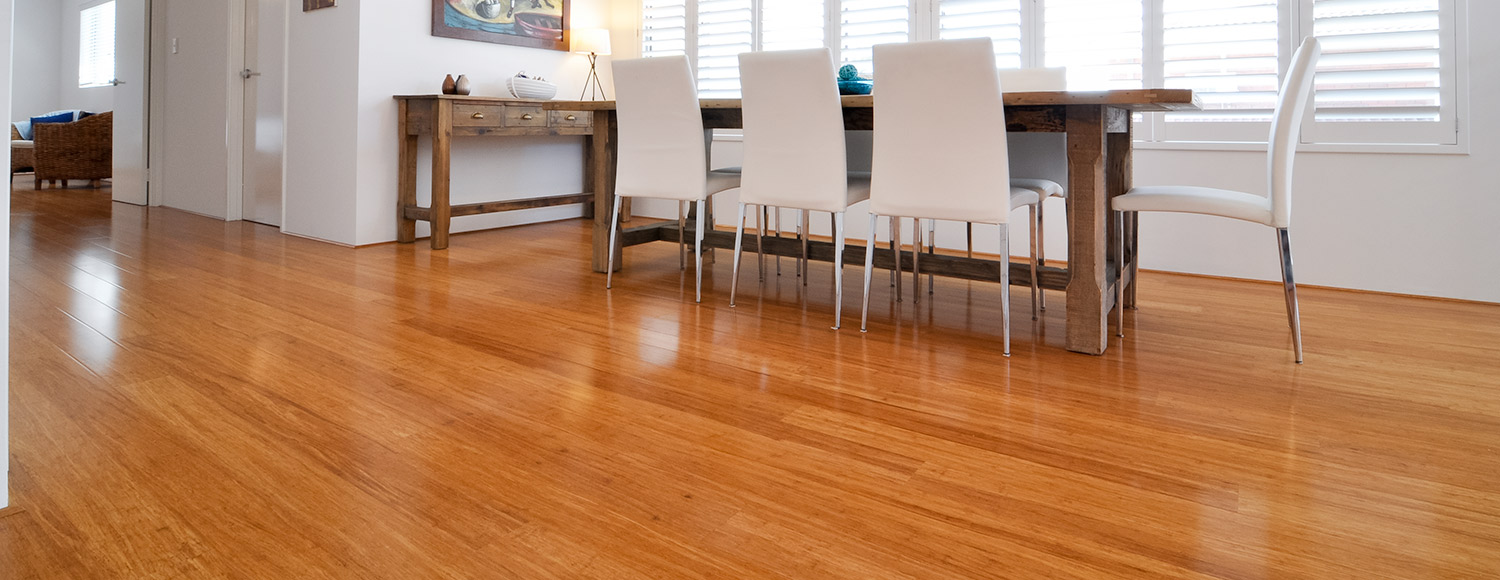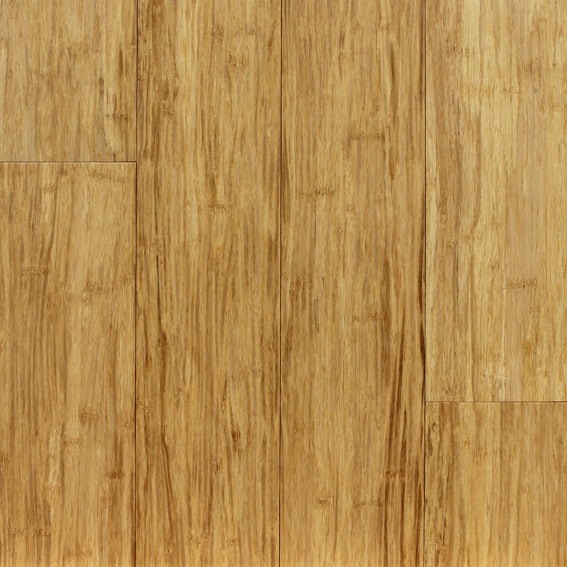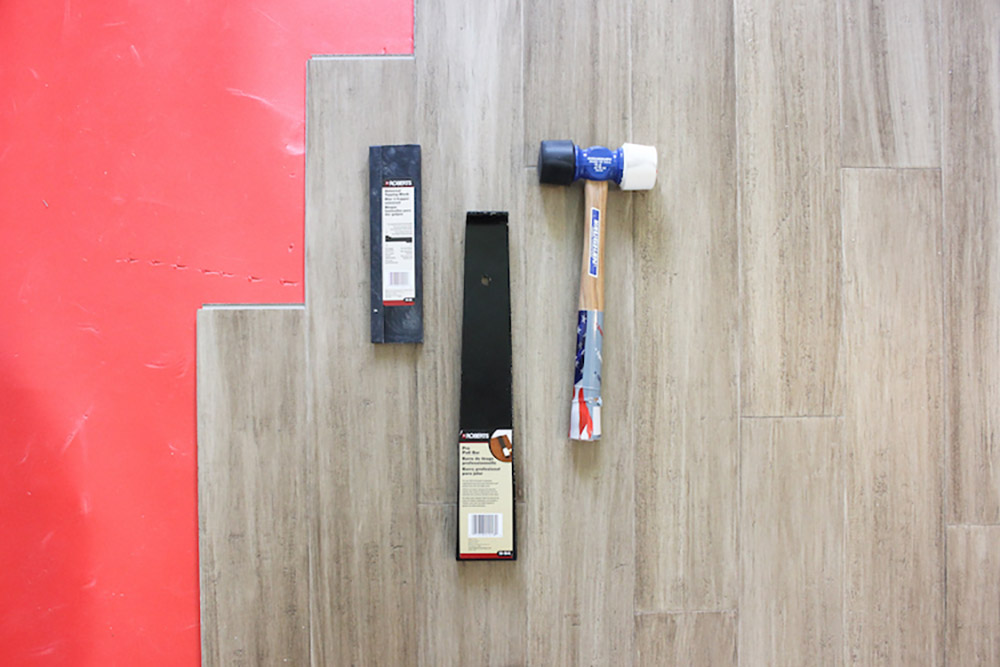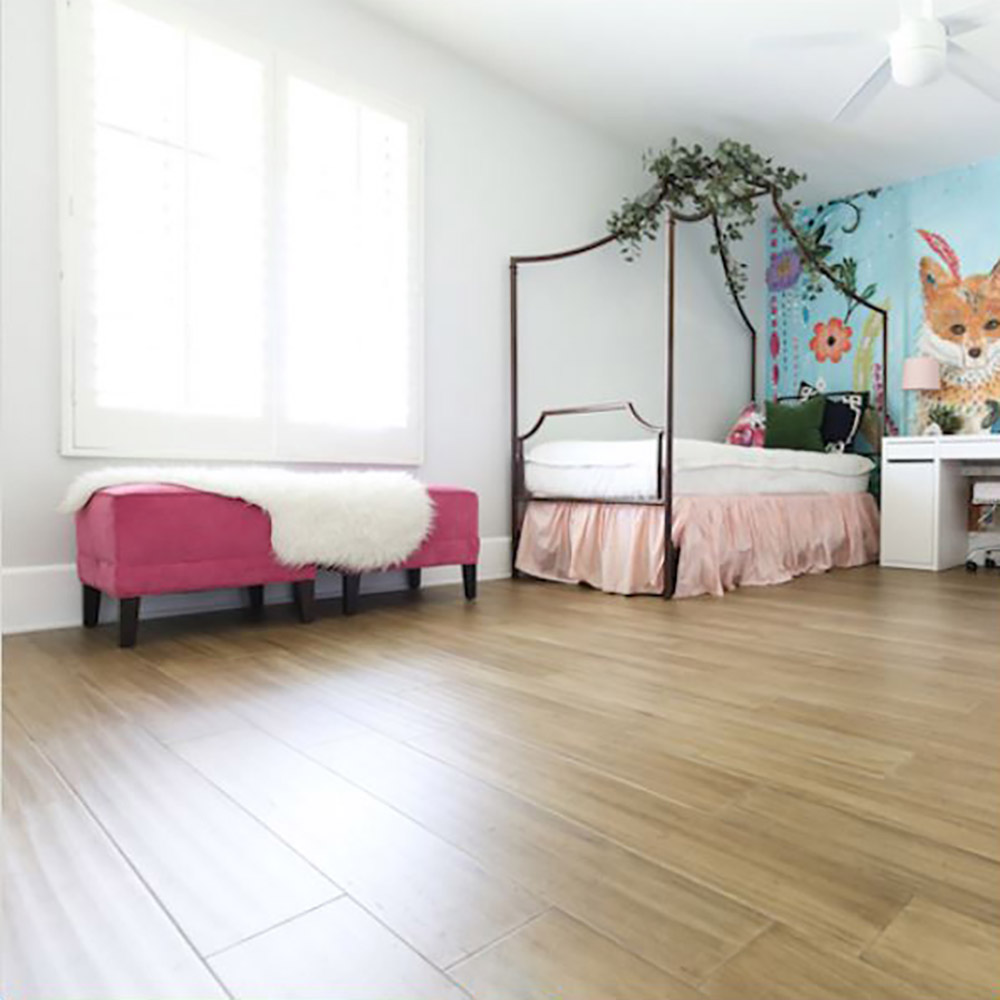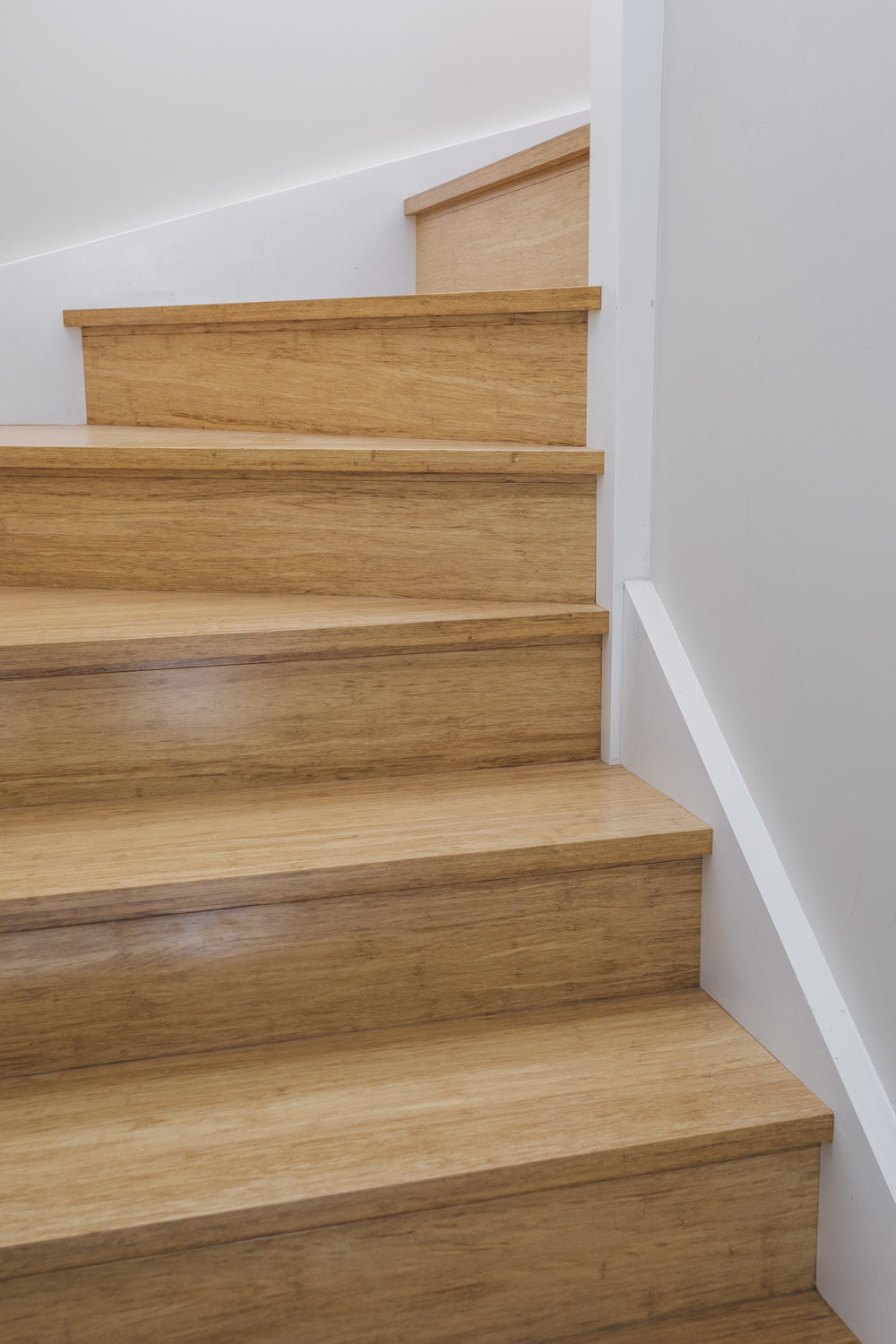Understanding Bamboo Flooring: Types and Benefits
Bamboo flooring stands out for its environmental benefits, durability, and aesthetic appeal. However, before embarking on a DIY project, it’s essential to understand the different types of bamboo flooring available and the specific benefits each type offers.
- Types of Bamboo Flooring
Bamboo flooring typically comes in three main types: strand-woven, horizontal, and vertical. Strand-woven bamboo is known for its incredible strength, often ranking higher on the Janka hardness scale than traditional hardwoods like oak. This makes it highly resistant to dents and scratches. Horizontal bamboo showcases the natural bamboo grain more prominently, offering a beautiful and distinct appearance, while vertical bamboo features a uniform, linear grain pattern, providing a more streamlined look. - Eco-Friendly Option
One of the biggest appeals of bamboo flooring is its sustainability. Bamboo is a fast-growing grass that reaches maturity in just 3-5 years, unlike hardwood trees, which take decades to mature. This rapid growth makes bamboo a renewable resource, ideal for eco-conscious homeowners. - Durability
Bamboo flooring, especially the strand-woven type, is incredibly durable. It can handle high-traffic areas and resist everyday wear and tear better than many hardwoods. Some bamboo floors are even treated to resist moisture and stains, which adds to their longevity. - Aesthetic Flexibility
Bamboo floors come in various shades and styles, from light natural tones to deep, rich hues. Whether you’re going for a modern, minimalist look or something more traditional, bamboo can easily fit into any aesthetic vision. - Affordability
While exotic hardwood flooring can be quite expensive, bamboo offers a cost-effective alternative. It is typically less expensive than traditional wood flooring, making it a budget-friendly option for homeowners looking to save money while still getting a high-quality product. - Comfort Underfoot
Bamboo flooring offers a slightly softer feel underfoot compared to some hardwoods. This can be more comfortable for those who spend a lot of time standing, such as in the kitchen or living areas.

Preparing Your Space: Tools and Materials Needed for Bamboo Flooring
Before diving into the actual installation process, preparation is key. Having the right tools and materials on hand will make the process smoother and prevent unnecessary delays. Here’s what you need to prepare for installing bamboo flooring.
Choosing the Right Bamboo Flooring
Start by selecting the right type of bamboo flooring for your space. As discussed earlier, strand-woven bamboo is the most durable, making it ideal for high-traffic areas, while horizontal bamboo works well for a more natural look. Ensure that the bamboo flooring is suitable for your home’s climate and humidity levels, as bamboo can expand or contract in extreme temperatures.
Tools You Will Need
Gather all the necessary tools before beginning the installation. Some essential tools include:
- Measuring tape
- Flooring nailer or staple gun
- Miter saw or table saw
- Hammer and rubber mallet
- Pull bar and spacers
- Utility knife
- Carpenter’s square
- Chalk line
- Moisture barrier (if needed)
Acclimating the Bamboo Flooring
Bamboo flooring, like other wood-based products, needs to acclimate to the room’s temperature and humidity. Lay the bamboo planks out in the room for at least 48-72 hours before installation. This will allow the bamboo to adjust to the environment, reducing the likelihood of expansion or contraction once installed.
Preparing the Subfloor
A clean, level subfloor is crucial for a successful installation. Make sure to remove any debris, dust, or old flooring materials. If the subfloor is uneven, you may need to sand or patch it to create a smooth surface. If installing over concrete, consider using a moisture barrier to protect the bamboo from potential damage.
Underlayment
Depending on your bamboo flooring type (floating or nail-down), you might need to install an underlayment. An underlayment can provide cushioning, reduce noise, and protect the bamboo from moisture. Choose an underlayment that is compatible with bamboo flooring and appropriate for your specific installation method.
Measuring and Planning
Measure the room accurately and plan the layout of the bamboo planks. You’ll want to stagger the joints to create a more natural look, avoiding any visible seams that align too closely. Use a chalk line to mark a straight starting point.
Step-by-Step Guide to Installing Bamboo Flooring
Installing bamboo flooring may seem daunting, but with proper planning and attention to detail, it can be a rewarding DIY project. Below is a step-by-step guide to help you install bamboo flooring successfully.
Starting with the First Row
Begin by laying the first row of bamboo planks along the longest wall in the room. Make sure the groove side of the planks faces the wall, leaving a small expansion gap (around ¼ inch) between the wall and the planks. Use spacers to maintain this gap, as bamboo flooring needs room to expand with temperature and humidity changes.
Connecting the Planks
As you install each new row of planks, fit the tongue of each plank into the groove of the previous row. Use a rubber mallet to tap the planks into place gently. Be cautious not to damage the tongue or groove during this process, as it can affect the flooring’s overall stability and appearance.
Cutting the Last Planks
When you reach the end of a row and need to cut a plank to fit, use a miter saw or table saw to make precise cuts. Remember to leave the expansion gap between the wall and the plank. Repeat this process for each row, ensuring the joints are staggered for a more natural appearance.
Installing Around Obstacles
If your room has doorways, vents, or other obstacles, use a jigsaw or utility knife to cut the bamboo planks to fit around them. Take your time to measure accurately and make clean cuts for a professional-looking finish.
Securing the Flooring
Depending on the type of bamboo flooring you choose, you may need to nail, staple, or glue it down. For nail-down or staple installations, use a flooring nailer to secure the planks to the subfloor. If you’re installing a floating floor, the planks will click and lock together without needing nails or glue.
Finishing the Edges
Once the bamboo flooring is installed, remove the spacers and install baseboards or quarter-round molding around the perimeter of the room. This will cover the expansion gap and give the floor a polished, finished look.
Finishing Touches: Sanding, Staining, and Sealing Bamboo Floors
Once your bamboo flooring is installed, it’s time to focus on the finishing touches. Sanding, staining, and sealing the floor will not only enhance its appearance but also increase its durability and longevity.
Sanding the Bamboo Floor
Depending on the type of bamboo flooring you installed (pre-finished or unfinished), you may or may not need to sand the floor. If the flooring is unfinished, start by sanding the surface to smooth out any imperfections. Use fine-grit sandpaper for the final sanding pass to achieve a smooth finish.
Choosing the Right Stain
If you’re opting to stain your bamboo floor, now is the time to select the color. Bamboo can be stained in a variety of shades, from light natural hues to rich, dark tones. Always test the stain on a small, inconspicuous area before applying it to the entire floor to ensure you’re happy with the color.
Applying the Stain
Once you’ve chosen your stain, apply it evenly across the surface of the floor using a stain applicator or cloth. Allow the stain to penetrate the bamboo for the recommended time before wiping away any excess. Be sure to follow the manufacturer’s instructions for drying times between coats.
Sealing the Bamboo Floor
After staining (or if you’re leaving the floor its natural color), apply a sealant to protect the bamboo from moisture, scratches, and wear. Polyurethane is a popular choice for bamboo floors due to its durability and protective properties. Apply several thin coats, allowing each coat to dry completely before applying the next.
Buffing the Floor
Once the sealant is fully dry, you can buff the floor to bring out its shine. Use a soft cloth or a floor buffer to give the surface a smooth, glossy finish. This final step will ensure your bamboo flooring looks sleek and professional.
Curing Time
After finishing the floor, allow it to cure for at least 24-48 hours before moving furniture or heavy items back into the room. This will prevent damage to the newly sealed surface and ensure a long-lasting finish.
Maintenance and Care Tips for Long-Lasting Bamboo Floors
Bamboo flooring is relatively easy to maintain, but proper care is essential to keep it looking its best for years to come. Regular maintenance will also prevent damage and prolong the lifespan of your floors.
Regular Cleaning
Sweep or vacuum your bamboo floor regularly to remove dust and dirt that can scratch the surface over time. Use a soft-bristled broom or a vacuum with a hardwood floor attachment to avoid damaging the bamboo.
Mopping
While bamboo is more resistant to moisture than some hardwoods, it’s still essential to avoid excessive water exposure. Use a damp mop (not soaking wet) to clean the floors as needed. Be sure to dry the surface immediately after mopping to prevent water from seeping into the seams.
Avoiding Scratches
Place felt pads under furniture legs to prevent scratches and dents. When moving furniture, lift it rather than dragging it across the floor. You can also use area rugs in high-traffic areas like entryways to protect the flooring from excessive wear.
Dealing with Spills
Spills should be cleaned up immediately to prevent moisture from penetrating the bamboo. Use a soft cloth or mop to absorb the liquid, and follow up with a dry cloth to remove any remaining moisture.
Polishing the Floors
Over time, your bamboo flooring may lose its shine. You can restore its luster by applying a polish specifically designed for bamboo or hardwood floors. Follow the manufacturer’s instructions for the best results.
Addressing Dents and Scratches
Minor dents and scratches can be repaired using a touch-up pen or wood filler. For more significant damage, consider sanding and refinishing the affected area. With proper care, your bamboo flooring can last for decades, maintaining its beauty and functionality.
Common Mistakes to Avoid
Installing bamboo flooring as a DIY project can be rewarding, but it’s important to avoid common mistakes that could compromise the final result. Here are some pitfalls to watch out for.
Skipping Acclimation
One of the most common mistakes is skipping the acclimation process. Bamboo flooring needs time to adjust to the room’s temperature and humidity levels before installation. Failing to acclimate the flooring can lead to expansion or contraction, causing gaps or buckling after installation.
Not Preparing the Subfloor Properly
A clean, level subfloor is essential for a successful installation. Skipping this step or not addressing uneven spots can result in an unstable floor that may squeak or shift over time. Always ensure the subfloor is flat, dry, and free of debris before starting the installation.
Incorrect Placement of Expansion Gaps
Bamboo flooring expands and contracts with changes in humidity, so it’s crucial to leave an expansion gap around the perimeter of the room. Failing to do so can cause the flooring to buckle or warp over time.
Misaligning the Planks
Plank alignment is key to achieving a professional-looking finish. Always stagger the joints between rows to create a more natural appearance. Aligning the joints too closely can create a visually unappealing pattern and weaken the floor’s overall structure.
Using Excessive Moisture During Cleaning
Bamboo is more resistant to moisture than hardwood, but excessive water can still cause damage. Avoid soaking the floor when mopping, and always dry the surface immediately after cleaning to prevent warping or discoloration.
Neglecting Regular Maintenance
Bamboo floors require regular maintenance to stay in good condition. Neglecting to sweep, mop, or protect the floor from scratches can shorten its lifespan and detract from its beauty. Make maintenance a priority to keep your floors looking pristine for years to come.
Is DIY Bamboo Flooring Worth It? Pros and Cons to Consider
Deciding whether to take on a DIY bamboo flooring project requires careful consideration of the pros and cons. Here’s a breakdown to help you decide if this is the right project for you.
Pros: Cost Savings
One of the biggest advantages of installing bamboo flooring yourself is the cost savings. Hiring a professional to install flooring can be expensive, and doing it yourself can significantly reduce labor costs. Bamboo flooring is also generally more affordable than traditional hardwood, making it a budget-friendly option.
Pros: Personal Satisfaction
There’s a sense of pride and accomplishment that comes with completing a DIY project. Installing bamboo flooring yourself allows you to take control of the process, making adjustments as needed to suit your preferences and space.
Pros: Eco-Friendly Choice
Bamboo is a renewable resource, making it an eco-friendly flooring choice. By choosing bamboo, you’re supporting sustainable practices, and the durability of the material means it will last for many years, reducing the need for replacement.
Cons: Time and Effort
Installing bamboo flooring can be time-consuming, especially if you’re new to DIY projects. From preparing the subfloor to laying the planks and applying the finishing touches, the process can take several days to complete. If you’re short on time, this may not be the best project for you.
Cons: Risk of Mistakes
DIY flooring installation comes with the risk of making mistakes that could affect the final result. Without the experience of a professional, it’s easy to misalign planks, skip important steps, or damage the flooring during installation.
Cons: Limited Warranty
Some manufacturers may offer limited warranties on bamboo flooring if it’s installed by a professional. By choosing the DIY route, you may not qualify for the full warranty, which could be a drawback if something goes wrong with the flooring down the line.
Bamboo Uniclic flooring home DIY
DIY Bamboo Flooring
DIY Bamboo Flooring
Engineered Bamboo Flooring Perth Perth Bamboo Flooring Installation
Related Posts:

